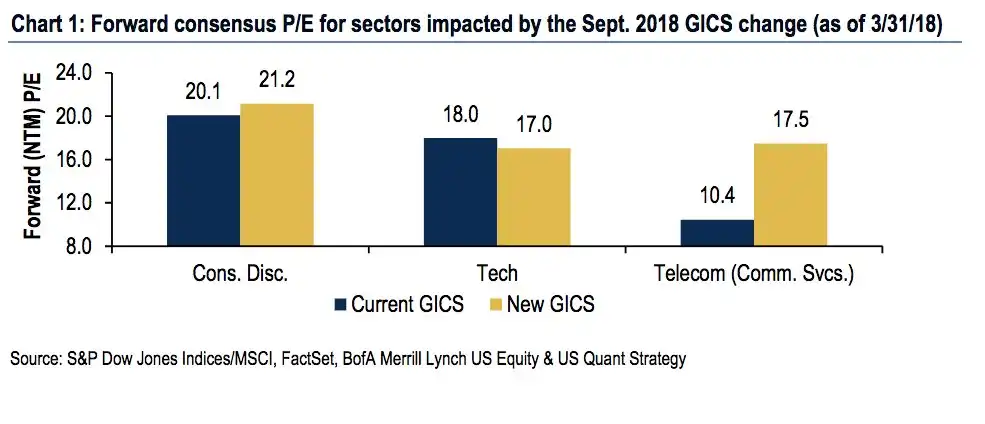In September 2018, the Standard and Poors Dow Jones Indices will broaden and reconfigure the “Telecommunication Services” sector to include some media and tech stocks, creating a new sector called Communications Services.

In some sense, the reorganization reflects the fact that consolidation has collapsed the former telecom index to overweighting to just three firms, too few, in other words, to constitute an index.
The change also reflects the mashup of the formerly-separate access services business with the content business. In addition to AT&T, Verizon and CenturyLink, the new index will include advertisers, broadcasters, cable and satellite providers, publishers, movie and entertainment companies and interactive home entertainment services.
In a broad sense, the change also shows the sweeping impact of new technology, deregulation and competition. Media, advertising, content and telecom have become so intertwined that Verizon and AT&T are both “communications” and “advertising and media” firms.
For the first time, firms such as Google and Facebook will be in the same index as AT&T and Verizon. So will the cable TV companies and Netflix.
Netflix, on the other hand, is both a content creator, packager and service provider. Amazon is a device manufacturer, video services provider, retailer and technology services provider.
In a narrower sense, the new index potentially will change price-earnings ratios, blending the low-P/E media firms with the average P/E telcos and the high P/E digital content firms.
In fact, some believe the Communications Services index will jump from the prior 10.4 P/E formerly held by AT&T, Verizon and CenturyLink (plus other smaller telcos), to perhaps 17.5 as digital content companies including Netflix, TripAdvisor Inc. Alphabet and Facebook.
On a broader philosophical level, the new index suggests the danger of regulating the formerly-distinct industries of media, advertising, applications, information technology and communications providers too narrowly.
The new Communications Services index suggests they now are interrelated, competing segments of a single new industry. Many practical questions will have to be addressed, as a result.
Broadly, we now see a mashup of former “common carrier” firms that were highly-regulated, with media, content and application and data processing firms that were unregulated, or covered under the U.S. Constitution’s First Amendment protection from government interference and control.
So one practical issue is whether the single new industry has the freedom of media, apps, content and computing, or is more regulated, even going so far as to use common carrier frameworks that are unconstitutional.
My own thinking is that more freedom, not less, for all the contestants, will work better than less freedom for all.

No comments:
Post a Comment